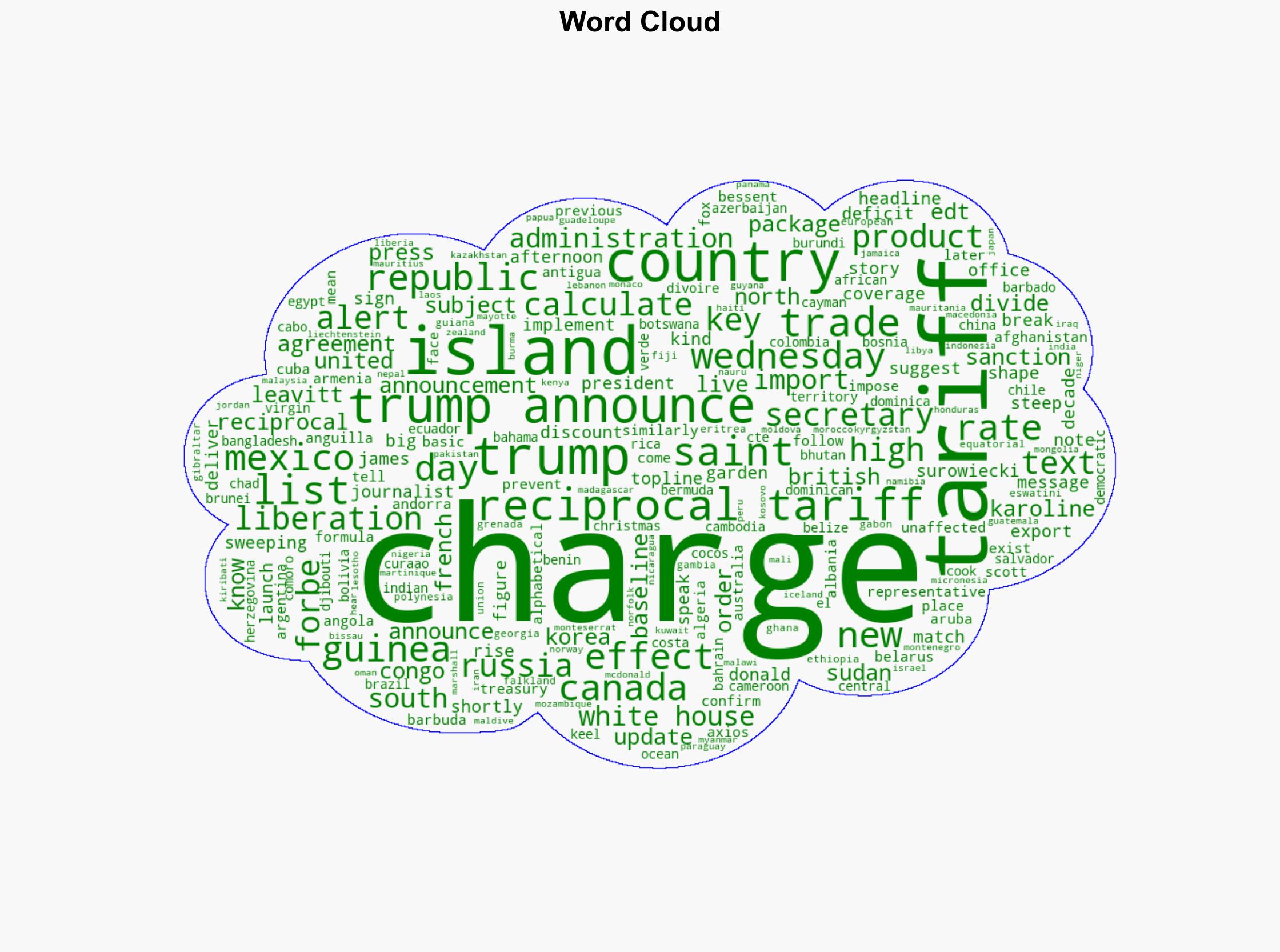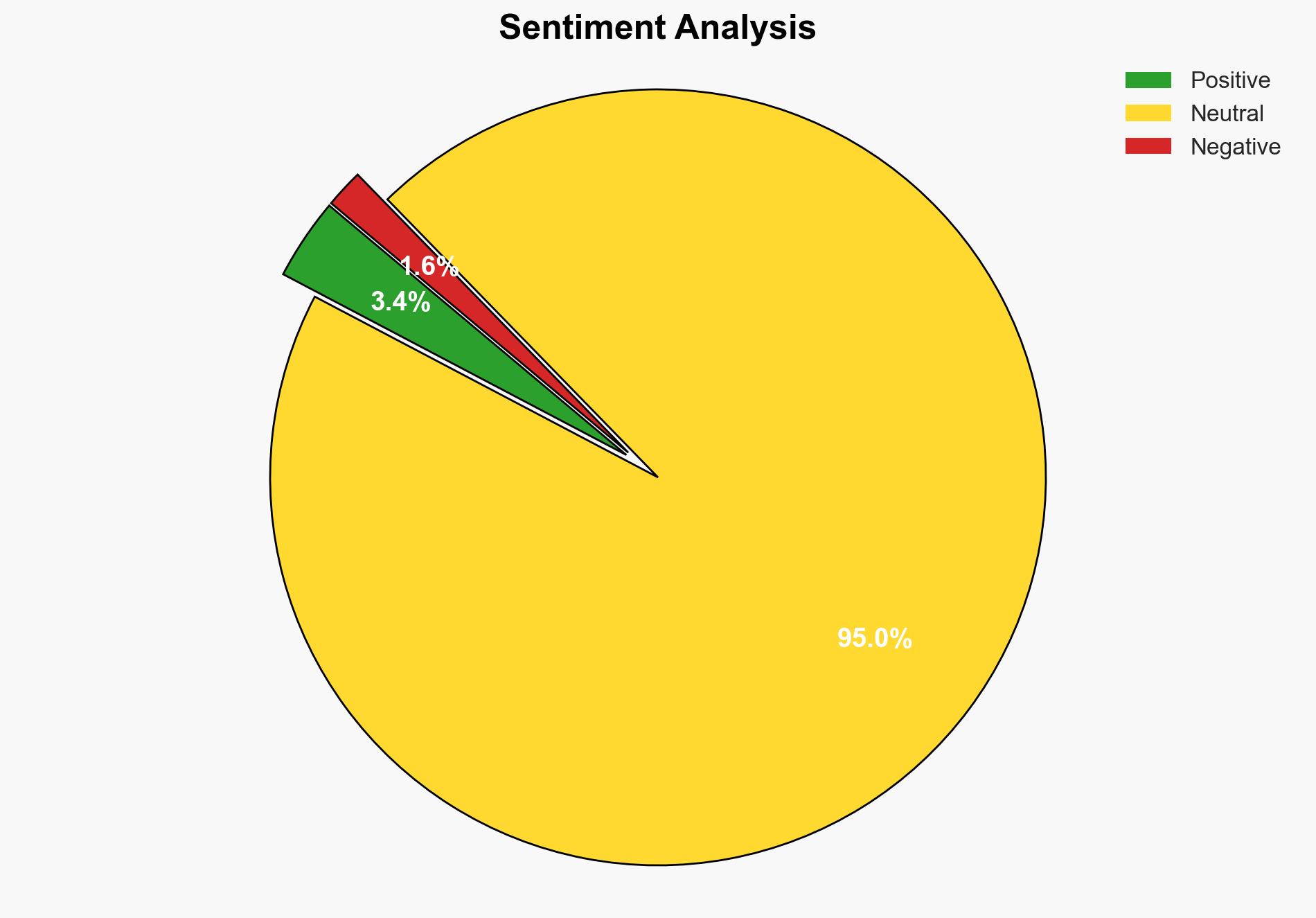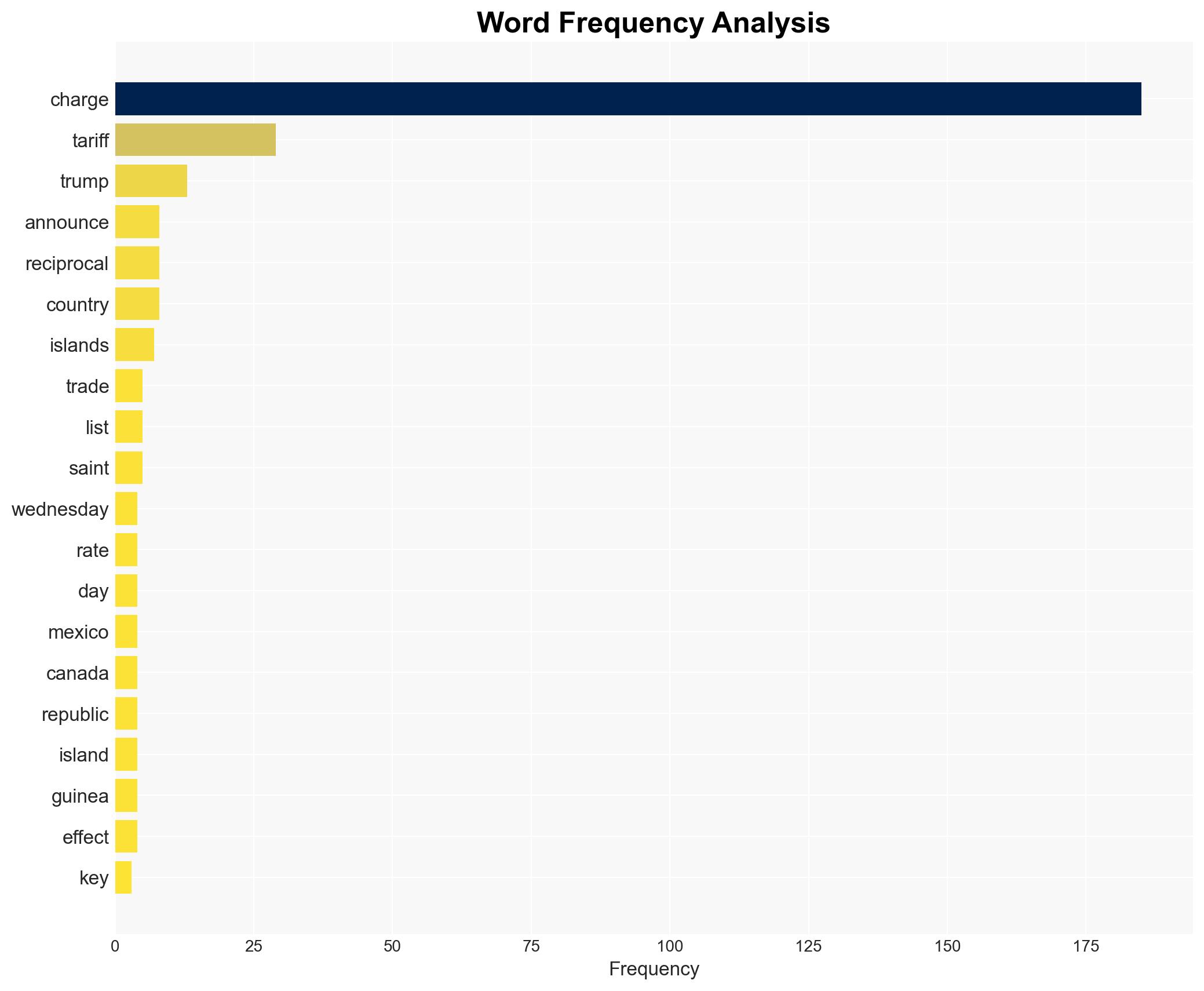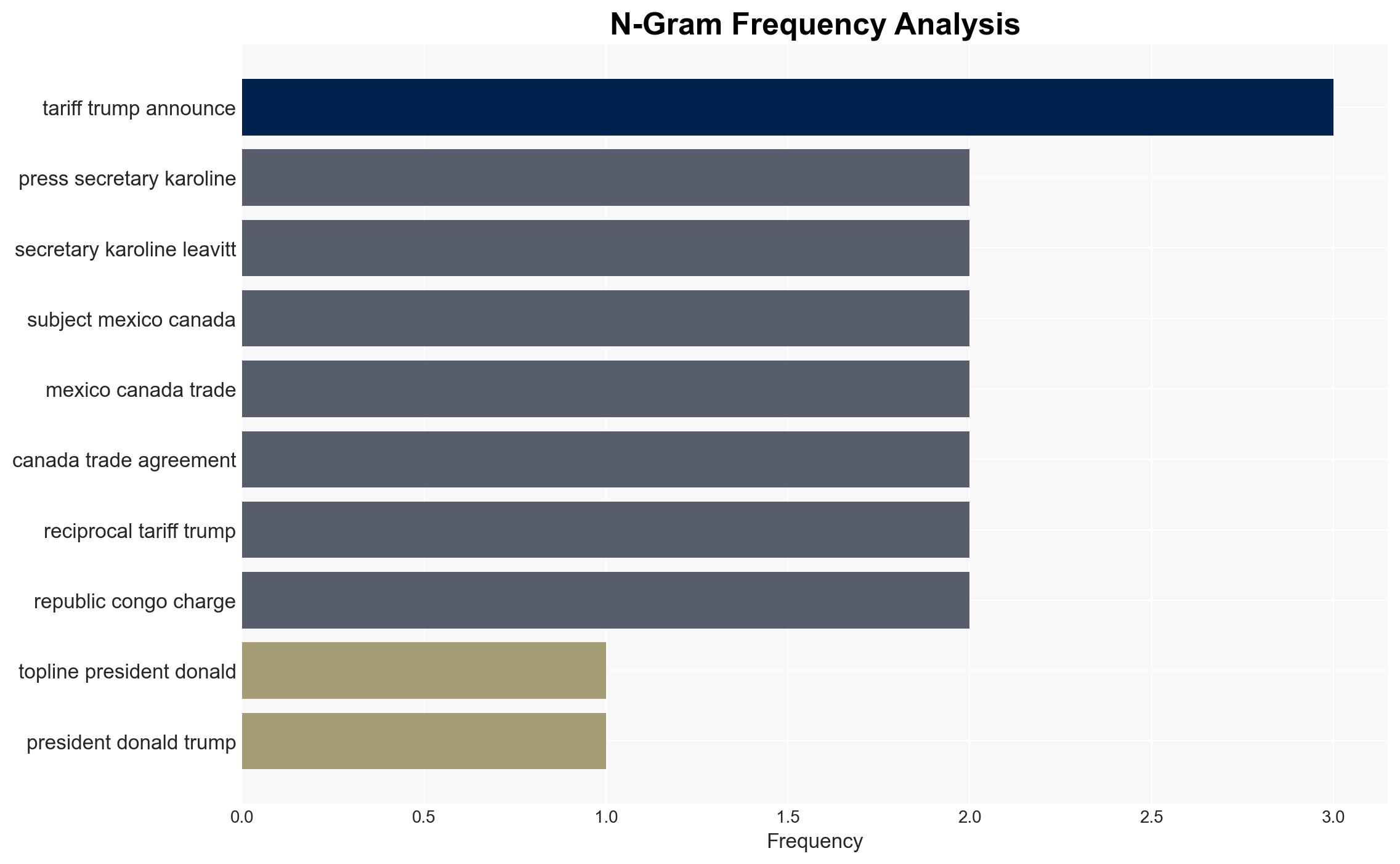Heres The Full List Of Trump’s Reciprocal Tariffs Announced Wednesday – Forbes
Published on: 2025-04-02
Intelligence Report: Heres The Full List Of Trump’s Reciprocal Tariffs Announced Wednesday – Forbes
1. BLUF (Bottom Line Up Front)
The announcement of reciprocal tariffs by Donald Trump marks a significant shift in trade policy, targeting numerous countries with baseline tariffs. This move is likely aimed at addressing trade imbalances and protecting domestic industries. Key countries such as Russia, Cuba, Belarus, and North Korea are notably absent from the list due to existing sanctions. The implications for international trade relations and economic stability are profound, necessitating strategic adjustments by affected nations.
2. Detailed Analysis
The following structured analytic techniques have been applied for this analysis:
General Analysis
The reciprocal tariffs announced are calculated based on a formula involving the trade deficit and export figures of each country. This approach suggests a targeted effort to equalize trade terms. The absence of Russia and other sanctioned countries indicates a continuation of existing foreign policy measures. The wide range of affected countries, from Afghanistan to Liechtenstein, highlights the comprehensive nature of this tariff strategy.
3. Implications and Strategic Risks
The imposition of these tariffs poses several risks, including potential retaliation from affected countries, which could escalate into broader trade conflicts. The economic impact on global supply chains and domestic markets could lead to increased costs for consumers and businesses. Additionally, the exclusion of certain countries may create geopolitical tensions, particularly with allies and trade partners like Mexico and Canada, who remain unaffected due to prior agreements.
4. Recommendations and Outlook
Recommendations:
- Engage in diplomatic dialogues with affected countries to mitigate potential retaliatory measures and preserve trade relationships.
- Consider revising tariff strategies to minimize negative impacts on domestic industries and consumers.
- Monitor economic indicators closely to assess the impact of tariffs and adjust policies accordingly.
Outlook:
In the best-case scenario, the tariffs lead to more balanced trade relationships and strengthened domestic industries. In the worst-case scenario, they trigger widespread trade wars and economic downturns. The most likely outcome involves a mix of diplomatic negotiations and selective tariff adjustments to stabilize the situation.
5. Key Individuals and Entities
The report mentions significant individuals such as Donald Trump, James Surowiecki, Scott Bessent, and Karoline Leavitt. These individuals play pivotal roles in shaping and communicating the tariff strategy, influencing both domestic and international responses.





